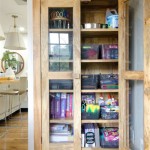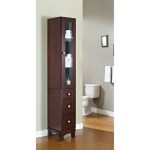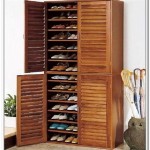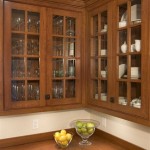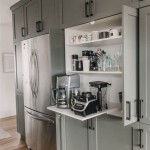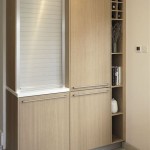Optimizing Your Kitchen With White Cabinets
White cabinets remain a popular choice for kitchens due to their timeless appeal and versatility. They offer a clean, bright aesthetic that can easily adapt to various design styles, from traditional to contemporary. However, maximizing the potential of white cabinets requires careful consideration of several factors, including layout, lighting, and complementary design elements.
One of the primary advantages of white cabinets is their ability to create an illusion of spaciousness. This is particularly beneficial in smaller kitchens where maximizing perceived space is crucial. White reflects light, making the room appear larger and brighter. This effect can be further enhanced by incorporating reflective surfaces, such as stainless steel appliances or a mirrored backsplash.
The choice of countertop material plays a significant role in the overall aesthetic of a kitchen with white cabinets. Darker countertops, such as granite or quartz in shades of black, brown, or deep grey, offer a striking contrast against the white cabinetry, creating a visually dynamic and sophisticated look. Lighter countertops, such as marble or light-colored quartz, can contribute to a more airy and open feel.
Wood countertops, particularly butcher block or reclaimed wood, can introduce warmth and texture to a kitchen dominated by white. This combination creates a balance between the crispness of the white cabinets and the natural, organic feel of the wood. The specific wood tone can be selected to complement the overall design palette.
Backsplash selection is another opportunity to personalize a kitchen with white cabinets. Subway tile, a classic choice, complements the clean lines of white cabinetry and provides a timeless backdrop. Mosaic tiles can add a touch of intricate detail and color, while a glass backsplash contributes to a modern and sleek aesthetic.
Lighting is a critical factor in optimizing the impact of white cabinets. Natural light should be maximized wherever possible. Window treatments should be chosen to allow ample light to enter the space. Under-cabinet lighting is essential for task lighting and can also create a warm and inviting ambiance in the evening.
Pendant lights or recessed lighting can provide general illumination, while strategically placed accent lighting can highlight specific design features. The color temperature of the lighting should also be considered. Warm white light creates a cozy atmosphere, while cool white light contributes to a more contemporary feel.
Hardware choices can significantly impact the style of white cabinets. Sleek, brushed nickel or stainless steel hardware complements a modern design, while oil-rubbed bronze or black hardware can add a touch of rustic charm. Classic knobs and pulls in polished chrome or brass can enhance a traditional aesthetic.
Flooring的选择应与橱柜和整体设计相协调。深色木地板可以与白色橱柜形成鲜明对比,而浅色木地板或瓷砖可以营造出更轻盈、更宽敞的感觉。选择耐用且易于维护的地板材料非常重要,尤其是在厨房等高流量区域。
Integrating color into a kitchen with white cabinets can be achieved through various design elements. Accent walls, colorful appliances, or vibrant kitchen accessories can introduce pops of color and personality. Textiles, such as curtains, rugs, and towels, offer opportunities to incorporate patterns and textures.
The style of white cabinets themselves can vary, influencing the overall design direction. Shaker-style cabinets, known for their simple and clean lines, are a popular choice for modern and transitional kitchens. Raised panel cabinets, with their more ornate detailing, are often found in traditional or classic kitchens.
Maintenance of white cabinets is a key consideration. While white offers a bright and airy aesthetic, it can also show dirt and smudges more readily than darker colors. Regular cleaning with a gentle cleanser and a soft cloth is recommended to maintain the pristine appearance of white cabinetry. Choosing durable and easy-to-clean paint finishes can also simplify maintenance.
Careful planning and thoughtful design choices are essential for optimizing the potential of white cabinets in a kitchen. By considering factors such as lighting, countertops, backsplashes, hardware, and flooring, a cohesive and aesthetically pleasing space can be created. The versatility of white allows for a wide range of design possibilities, from classic and traditional to modern and minimalist, making it a timeless choice for kitchen cabinetry.
Effectively utilizing wall space is another important aspect of kitchen design, particularly with white cabinets. Open shelving can provide a display area for decorative items and frequently used dishes, adding visual interest and functionality. However, open shelving requires careful organization to maintain a clean and uncluttered look.
Incorporating a kitchen island can enhance both the functionality and aesthetic appeal of a kitchen with white cabinets. The island can provide additional counter space, storage, and seating, while also serving as a focal point in the room. The color and material of the island can be chosen to complement or contrast with the white cabinets, further personalizing the space.

4 Smart Ways To Make White Cabinets Work

U Shaped Kitchen A Comprehensive Guide Oppolia

The Perfect Kitchen Layout Optimizing Space And Efficiency

Remodeling A Small Kitchen How To Optimize Your Storage Cabinets Of Distinction Llc

How To Add Function And Optimize Storage In Your Kitchen

From Design To Installation Your Complete Guide Ivory Kitchen Cabinets
How To Optimize Kitchen Cabinet Storage Space

Guide To Kitchen Design In Reviving Your Culinary Space

The Best Ideas To Optimize Kitchen Corner Cabinets Arched Manor

Top 10 Tips To Optimize Your Kitchen Space For More Efficiency Urban Ladder
Related Posts

